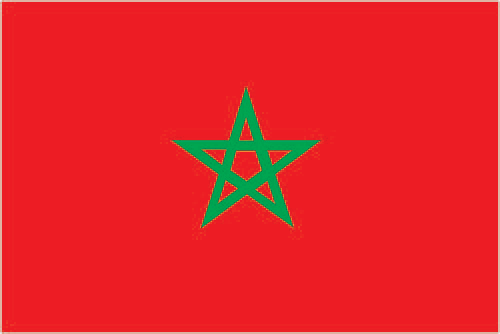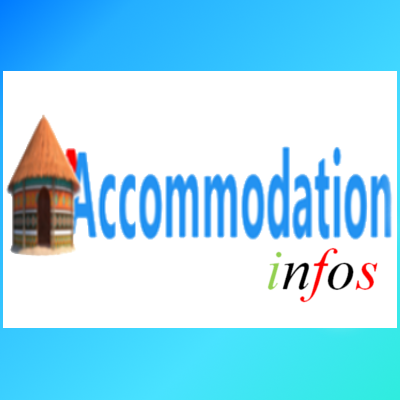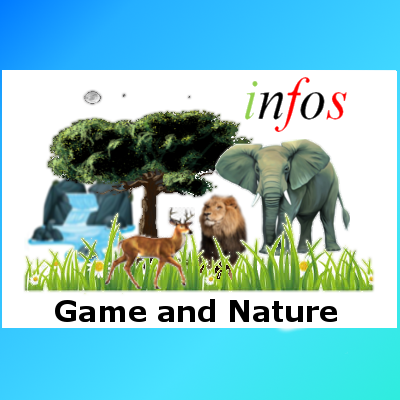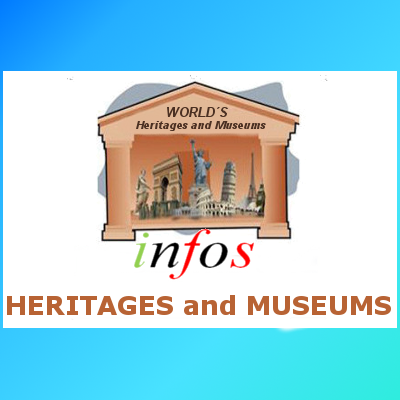Morocco, officially known as the Kingdom of Morocco; is a unitary sovereign state located in the Maghreb region of North Africa. It is one of the native homelands of the indigenous Berber people. Geographically, Morocco is characterized by a rugged mountainous interior, large tracts of desert and a lengthy coastline along the Atlantic Ocean and Mediterranean Sea.
Morocco has a population of over 33.8 million and an area of 446,550 km2 (172,410 sq mi). Its capital is Rabat, and the largest city is Casablanca. Other major cities include Marrakesh, Tangier, Salé, Fes, and Meknes. A historically prominent regional power, Morocco has a history of independence not shared by its neighbors. Since the foundation of the first Moroccan state by Idris I in 788, the country has been ruled by a series of independent dynasties, reaching its zenith under the Almoravid dynasty and Almohad dynasty, spanning parts of Iberia and Northwestern Africa. Marinid and Saadi dynasties continued the struggle against foreign domination, and Morocco remained the only North African country to avoid Ottoman occupation. The Alaouite dynasty, the current ruling dynasty, seized power in 1631. In 1912, Morocco was divided into French and Spanish protectorates, with an international zone in Tangier, and regained its independence in 1956. Moroccan culture is a blend of Berber, Arab, West African, and European influences.
Morocco claims the non-self-governing territory of Western Sahara as its Southern Provinces. Morocco annexed the territory in 1975, leading to a guerrilla war with indigenous forces until a cease-fire in 1991. Peace processes have thus far failed to break the political deadlock.
Morocco is a constitutional monarchy with an elected parliament. The King of Morocco holds vast executive and legislative powers, especially over the military, foreign policy and religious affairs. Executive power is exercised by the government, while legislative power is vested in both the government and the two chambers of parliament, the Assembly of Representatives and the Assembly of Councillors. The king can issue decrees called dahirs which have the force of law. He can also dissolve the parliament after consulting the Prime Minister and the president of the Constitutional court.
Morocco’s predominant religion is Islam, and the official languages are Arabic and Berber, with Berber being the native language of Morocco before Arab colonization. The Moroccan dialect, referred to as Darija, and French are also widely spoken. Morocco is a member of the Arab League, the Union for the Mediterranean, and the African Union. It has the fifth largest economy of Africa.
Population: 35,740,000 (2017)
Currency
Moroccan dirham (MAD)
Geography
Morocco has a coast by the Atlantic Ocean that reaches past the Strait of Gibraltar into the Mediterranean Sea. It is bordered by Spain to the north (a water border through the Strait and land borders with three small Spanish-controlled exclaves, Ceuta, Melilla, and Peñón de Vélez de la Gomera), Algeria to the east, and Western Sahara to the south. Since Morocco controls most of Western Sahara, its de facto southern boundary is with Mauritania.
The internationally recognised borders of the country lie between latitudes 27° and 36°N, and longitudes 1° and 14°W. Adding Western Sahara, Morocco lies mostly between 21° and 36°N, and 1° and 17°W (the Ras Nouadhibou peninsula is slightly south of 21° and west of 17°).
The geography of Morocco spans from the Atlantic Ocean, to mountainous areas, to the Sahara desert. Morocco is a Northern African country, bordering the North Atlantic Ocean and the Mediterranean Sea, between Algeria and the annexed Western Sahara. It is one of only three nations (along with Spain and France) to have both Atlantic and Mediterranean coastlines.
A large part of Morocco is mountainous. The Atlas Mountains are located mainly in the centre and the south of the country. The Rif Mountains are located in the north of the country. Both ranges are mainly inhabited by the Berber people. At 446,550 km2 (172,414 sq mi), Morocco is the fifty-seventh largest country in the world. Algeria borders Morocco to the east and southeast, though the border between the two countries has been closed since 1994.
Spanish territory in North Africa neighbouring Morocco comprises five enclaves on the Mediterranean coast: Ceuta, Melilla, Peñón de Vélez de la Gomera, Peñón de Alhucemas, the Chafarinas islands, and the disputed islet Perejil. Off the Atlantic coast the Canary Islands belong to Spain, whereas Madeira to the north is Portuguese. To the north, Morocco is bordered by the Strait of Gibraltar, where international shipping has unimpeded transit passage between the Atlantic and Mediterranean.
The Rif mountains stretch over the region bordering the Mediterranean from the north-west to the north-east. The Atlas Mountains run down the backbone of the country, from the northeast to the south west. Most of the southeast portion of the country is in the Sahara Desert and as such is generally sparsely populated and unproductive economically. Most of the population lives to the north of these mountains, while to the south lies the Western Sahara, a former Spanish colony that was annexed by Morocco in 1975 (see Green March). Morocco claims that the Western Sahara is part of its territory and refers to that as its Southern Provinces.
Morocco’s capital city is Rabat; its largest city is its main port, Casablanca. Other cities recording a population over 500,000 in the 2014 Moroccan census are Fes, Marrakesh, Meknes, Salé and Tangier.
Morocco is represented in the ISO 3166-1 alpha-2 geographical encoding standard by the symbol MA. This code was used as the basis for Morocco’s internet domain, .ma.
Climate

The country’s Mediterranean climate is similar to that of southern California, with lush forests in the northern and central mountain ranges of the country, giving way to drier conditions and inland deserts further southeast. The Moroccan coastal plains experience remarkably moderate temperatures even in summer, owing to the effect of the cold Canary Current off its Atlantic coast.
In the Rif, Middle and High Atlas Mountains, there exist several different types of climates: Mediterranean along the coastal lowlands, giving way to a humid temperate climate at higher elevations with sufficient moisture to allow for the growth of different species of oaks, moss carpets, junipers, and Atlantic fir which is a royal conifer tree endemic to Morocco. In the valleys, fertile soils and high precipitation allow for the growth of thick and lush forests. Cloud forests can be found in the west of the Rif Mountains and Middle Atlas Mountains. At higher elevations, the climate becomes alpine in character, and can sustain ski resorts.
Southeast of the Atlas mountains, near the Algerian borders, the climate becomes very dry, with long and hot summers. Extreme heat and low moisture levels are especially pronounced in the lowland regions east of the Atlas range due to the rain shadow effect of the mountain system. The southeastern-most portions of Morocco are very hot, and include portions of the Sahara Desert, where vast swathes of sand dunes and rocky plains are dotted with lush oases.
In contrast to the Sahara region in the south, coastal plains are fertile in the central and northern regions of the country, and comprise the backbone of the country’s agriculture, in which 95% of the population live. The direct exposure to the North Atlantic Ocean, the proximity to mainland Europe and the long stretched Rif and Atlas mountains are the factors of the rather European-like climate in the northern half of the country. That makes from Morocco a country of contrasts. Forested areas cover about 12% of the country while arable land accounts for 18%. Approximately 5% of Moroccan land is irrigated for agricultural use.
Economy
Morocco’s economy is considered a relatively liberal economy governed by the law of supply and demand. Since 1993, the country has followed a policy of privatisation of certain economic sectors which used to be in the hands of the government. Morocco has become a major player in African economic affairs, and is the 5th African economy by GDP (PPP). Morocco was ranked as the first African country by the Economist Intelligence Unit’s quality-of-life index, ahead of South Africa. However, in the years since that first-place ranking was given, Morocco has slipped into fourth place behind Egypt.
Government reforms and steady yearly growth in the region of 4–5% from 2000 to 2007, including 4.9% year-on-year growth in 2003–2007 helped the Moroccan economy to become much more robust compared to a few years ago. For 2012 the World Bank forecasts a rate of 4% growth for Morocco and 4.2% for following year, 2013.
The services sector accounts for just over half of GDP and industry, made up of mining, construction and manufacturing, is an additional quarter. The industries that recorded the highest growth are tourism, telecoms, information technology, and textile.
Transport
There are around 56,986 km (35,409 mi) of roads (national, regional and provincial) in Morocco. In addition to 1,416 km (880 mi) of highways.
The Tangier-Casablanca high-speed rail link marks the first stage of the ONCF’s high-speed rail master plan, pursuant to which over 1,500 km (930 mi) of new railway lines will be built by 2035. The high speed train – TGV – will have a capacity of 500 passengers and will carry 8 million passengers per year. The work on the High Speed Rail project was started in September 2011. Construction of infrastructure and delivery of railway equipment will end in 2014 and the HSR will be operational by December 2015.
Languages
Morocco’s official languages are Arabic and Berber. The country’s distinctive group of Moroccan Arabic dialects is referred to as Darija. Approximately 89.8% of the whole population can communicate to some degree in Moroccan Arabic. The Berber language is spoken in three dialects (Tarifit, Tashelhit and Central Atlas Tamazight). In 2008, Frédéric Deroche estimated that there were 12 million Berber speakers, making up about 40% of the population. The 2004 population census reported that 28.1% of the population spoke Berber.
French is widely used in governmental institutions, media, mid-size and large companies, international commerce with French-speaking countries, and often in international diplomacy. French is taught as an obligatory language at all schools. In 2010, there were 10,366,000 French-speakers in Morocco, or about 32% of the population.
According to the 2004 census, 2.19 million Moroccans spoke a foreign language other than French. English, while far behind French in terms of number of speakers, is the first foreign language of choice, since French is obligatory, among educated youth and professionals.
According to Ethnologue, as of 2018, there are 3,416,590 individuals in Morocco who speak Spanish. Spanish is mostly spoken in northern Morocco and the Spanish Sahara because Spain had previously occupied those areas. Moroccans in regions formerly controlled by Spain watch Spanish television and have interactions in Spanish on a daily basis.
After Morocco declared independence in 1956, French and Arabic became the main languages of administration and education, causing the role of Spanish to decline.
Health care
In 2010, spending on healthcare accounted for 5.19% of the country’s GDP. In 2009, there were 6.46 physicians and 9.28 nurses per 10,000 inhabitants. The life expectancy at birth was 74 years in 2013, or 72 years for males and 76 years for females.














